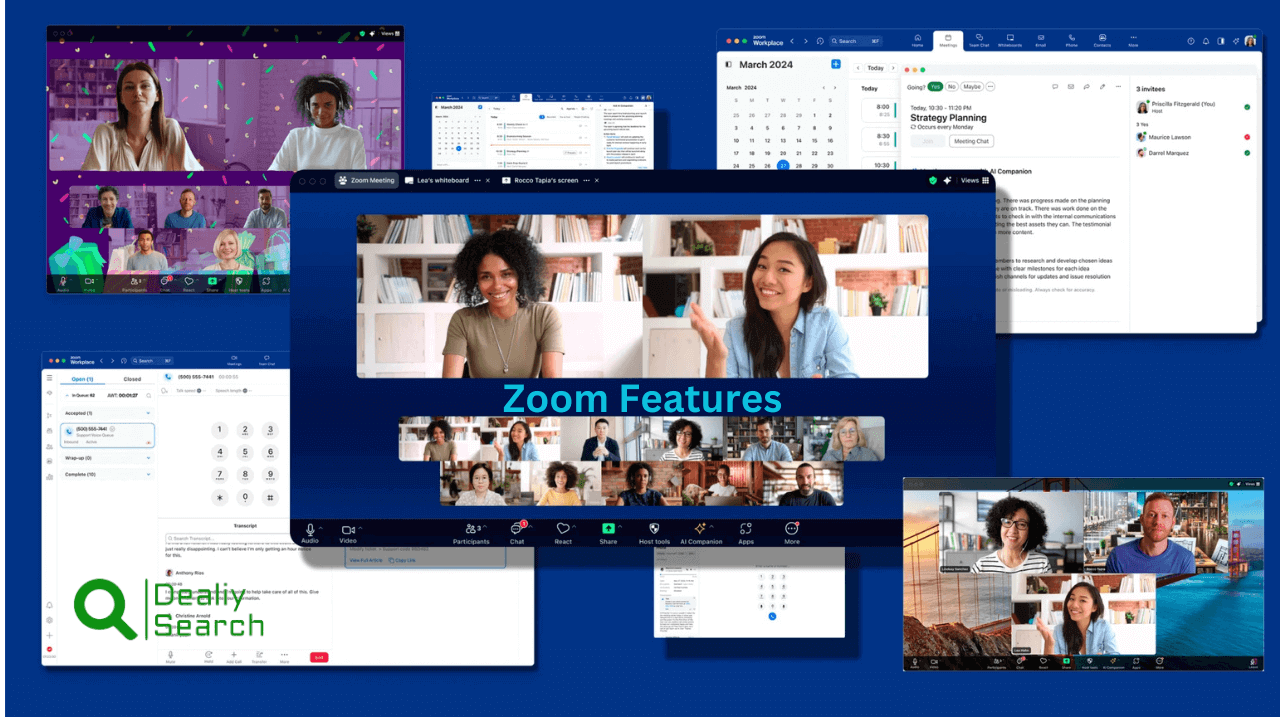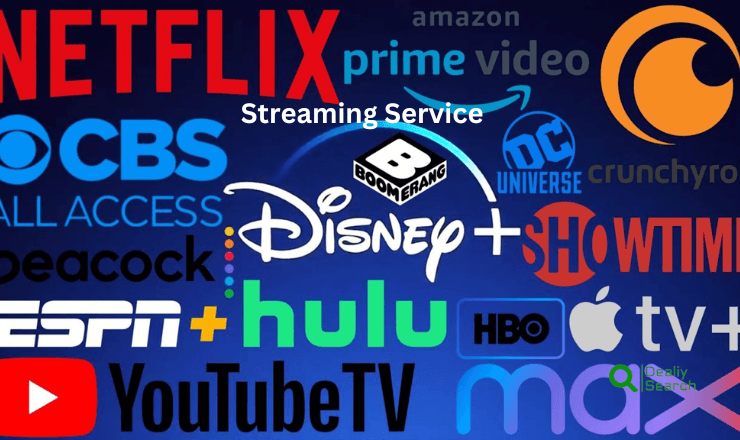The Ultimate Guide to Choosing Live Streaming Tools for Your Business

Live streaming has become integral to the digital landscape, allowing businesses to connect with their audience in real-time. The ability to broadcast live video content has opened up new possibilities for engagement, interaction, and brand awareness. However, with many live streaming tools in the market, choosing the right one for your business can take time and effort. In this ultimate guide, I will walk you through selecting the best live-streaming tools that suit your needs.
The Importance of Live Streaming for Businesses
Live streaming has emerged as a powerful marketing tool, enabling businesses to reach a wider audience and create authentic connections. The immediacy and interactivity of live video make it a valuable asset for businesses of all sizes and industries. Whether you are a small business owner looking to showcase your products or a multinational corporation hosting a virtual conference, live streaming can help you engage your audience meaningfully.
Live streaming provides a unique opportunity to humanize your brand and build trust with your audience. Businesses can foster a sense of transparency and authenticity by sharing behind-the-scenes footage, conducting live Q&A sessions, or hosting product demonstrations. This, in turn, establishes a stronger connection with customers and leads to increased brand loyalty.
Factors to Consider When Choosing Live Streaming Tools
When choosing live streaming tools, several key factors should be considered to ensure a smooth and high-quality broadcast. First, video and audio quality are crucial, as a clear and professional stream enhances viewer engagement. Second, platform compatibility matters, as the tool should support streaming on popular platforms like YouTube, Facebook, or Twitch. Third, ease of use is important, especially for beginners, as a user-friendly interface simplifies the streaming process. Customization options such as overlays, branding, and chat integration can enhance audience interaction. Another vital factor is internet and bandwidth requirements, as the tool should optimize performance based on available network speed. Lastly, cost and pricing plans should be considered, ensuring the tool fits within budget while offering necessary features.
Before diving into live streaming tools, you must identify your business objectives and determine your required features. Here are some factors to consider when choosing the right live-streaming tools for your business:

Ease of Use and User Interface: A user-friendly interface is crucial when selecting a live-streaming tool. Look for tools that offer a simple and intuitive dashboard, allowing you to navigate the platform easily. Additionally, consider the learning curve associated with the tool and ensure that it aligns with your team’s technical expertise.
Streaming Quality and Stability: The quality of your live stream can significantly impact the viewer’s experience. Look for tools that offer high-definition streaming capabilities and ensure that they are equipped to handle your desired audience size. Stability is also crucial, as interruptions or buffering can lead to losing viewer engagement.
Integration and Compatibility: Consider the compatibility of the live streaming tool with your existing infrastructure. Does it integrate seamlessly with your website, social media platforms, or other marketing tools? Connecting your live streams to your existing ecosystem can streamline your workflow and enhance the user experience.
Analytics and Reporting: Understanding the performance of your live streams is vital for measuring the success of your efforts. Look for tools that provide:
- Comprehensive analytics and reporting features.
- Allowing you to track viewer engagement.
- Audience demographics.
- Other valuable metrics.
Customer Support and Reliability: Technical issues can arise at any time, so choosing a live-streaming tool that offers reliable customer support is essential. Look for tools that provide 24/7 assistance through live chat, email, or phone. Additionally, the tool’s reputation should be considered, and reviews from other users should be read to gauge its reliability.
Popular Live Streaming Tools in the Market
Now that you know the factors to consider, let’s explore some of the most popular live-streaming tools available today. Each of these tools offers unique features and caters to different business needs. It is essential to evaluate them based on your specific requirements and objectives.

OBS Studio: OBS Studio is a free and open-source live-streaming tool that both beginners and professionals widely use. It offers a range of features, including customizable scenes, real-time video and audio mixing, and support for multiple platforms. OBS Studio is compatible with Windows, macOS, and Linux, making it accessible to many users.
Streamlabs OBS: Streamlabs OBS is a user-friendly live-streaming tool for content creators and gamers. It offers a variety of features, such as customizable themes, built-in alerts, and integration with popular streaming platforms like Twitch and YouTube. With its intuitive interface and extensive library of plugins, Streamlabs OBS is a popular choice among streamers.
Vimeo Livestream: Vimeo Livestream is a professional-grade live streaming tool with advanced features for businesses and organizations. It offers high-quality streaming, customizable player options, and robust analytics. Vimeo Livestream also offers monetization options, making it suitable for companies looking to generate revenue from their live streams.
These are just a few examples of the wide range of live streaming tools available on the market. Before making a decision, it is important to explore and evaluate different options based on your specific requirements.
How to Evaluate Live Streaming Tools for Your Specific Business Needs
Evaluating live streaming tools for your specific business needs requires a strategic approach to ensure the best fit. Start by identifying your business objectives, such as marketing, education, or entertainment, to determine the essential features needed. Next, assess the video and audio quality, ensuring the tool delivers a professional and seamless streaming experience. Compatibility with your preferred platforms, such as YouTube, Facebook, or LinkedIn, is crucial for reaching your target audience.
Consider the ease of use and technical support available, as a user-friendly interface and reliable customer service can prevent disruptions. Analyze customization and branding options to enhance your brand identity. Security features, such as password protection and encryption, are also important for businesses handling sensitive content. Finally, compare pricing and scalability, ensuring the tool fits your budget while allowing for future growth.
Choosing the right live-streaming tool for your business goes beyond features and pricing. Evaluating the tools based on your specific business needs and objectives is essential. Here are some steps to help you make an informed decision:

Identify Your Objectives: Start by clearly defining your objectives and the purpose of your live streams. Are you looking to increase brand awareness, generate leads, or provide educational content? Understanding your goals will help you narrow down the features you require in a live streaming tool.
Assess Your Technical Requirements: Evaluate your technical requirements, such as the number of simultaneous streams, streaming quality, and compatibility with your existing infrastructure. Consider factors like internet bandwidth, hardware resources, and the ability to integrate with your website or social media platforms.
Research and Compare: Research different live streaming tools read reviews, and compare their features, pricing, and user experience. Look for case studies or success stories from businesses similar to yours. This will give you a better understanding of how the tools perform in real-world scenarios.
Take Advantage of Free Trials: Many live streaming tools offer free trials or demo versions. Please use these opportunities to test the tools and assess their suitability for your business. Pay attention to the user interface, ease of use, and the availability of support during the trial period.
Seek Recommendations and Feedback: Reach out to other businesses or industry professionals who have experience with live-streaming tools. Ask for recommendations and gather feedback on their experiences. This first-hand information can provide valuable insights and help you make an informed decision.
Tips for Setting Up and Optimizing Live Streams
Setting up and optimizing live streams requires careful planning to ensure a smooth and professional broadcast. First, choose the right streaming tool that meets your needs in terms of video quality, platform compatibility, and customization options. Next, ensure a stable internet connection with sufficient bandwidth to prevent buffering or lag. Test your audio and video equipment before going live to avoid technical issues, and use a good-quality microphone and camera for clear sound and visuals.
Optimize lighting and background settings to create a professional appearance. Engage with your audience by responding to comments, using interactive elements like polls, and maintaining a consistent streaming schedule. Adjust bitrate and resolution settings based on your internet speed to ensure a smooth stream. Lastly, record your live sessions for future use and analyze viewer engagement metrics to improve future broadcasts.
Once you have chosen the right live streaming tool for your business, it is time to set up and optimize your live streams for maximum impact. Here are some tips to help you get started:
Plan and Prepare
- Plan your content and create a script or outline to guide your presentation.
- Prepare any necessary visuals, slides, or props.
- Rehearse your presentation to ensure a smooth delivery.
- Test Your Equipment
Engage with Your Audience: Interact with your audience during the live stream by responding to real-time comments and questions. Encourage viewers to participate by asking for their input or conducting polls and surveys.
Promote Your Live Stream: Promote your live stream in advance to build anticipation and attract a larger audience. Utilize your website, social media channels, email newsletters, and other marketing channels to spread the word.
Analyze and Improve
- Analyze the performance metrics provided by your chosen live-streaming tool.
- Look for areas of improvement and adjust your strategy accordingly.
- Experiment with different formats, topics, and timings to optimize your live streams.
Case Studies of Successful Live-Streaming Campaigns
Successful live-streaming campaigns have demonstrated the power of real-time engagement in boosting brand awareness, sales, and audience interaction. One notable example is NASA’s live streams of space missions, which have captivated millions worldwide by providing real-time insights into space exploration, fostering educational engagement. Another success story is Apple’s product launch events, where the company live-streams its announcements, generating massive global anticipation and media coverage.
E-commerce platforms like Amazon Live and Alibaba’s Singles’ Day sales events have leveraged live streaming to showcase products, interact with customers, and drive instant purchases. Moreover, gaming influencers on platforms like Twitch and YouTube have built entire communities through engaging live content, sponsorships, and interactive sessions. These case studies highlight how live streaming can be a powerful tool for businesses, brands, and organizations to connect with audiences, enhance engagement, and achieve marketing goals.
To inspire and guide you in your live-streaming endeavors, let’s take a look at a few case studies of successful live-streaming campaigns:
Red Bull’s Stratos Space Jump: Red Bull’s Stratos Space Jump was a live-streaming event that captured the world’s attention. The event featured Felix Baumgartner’s record-breaking freefall from the edge of space, with the live stream attracting millions of viewers worldwide. The campaign showcased Red Bull’s commitment to extreme sports and generated significant brand exposure and engagement.
Sephora’s Beauty Tutorials: Sephora, a leading beauty retailer, regularly hosts live-streaming events featuring beauty tutorials and product demonstrations. These live streams allow viewers to interact with beauty experts, ask questions, and learn new techniques. Sephora’s live-streaming campaigns have helped build a loyal community and drive sales through product recommendations.
Adidas’ Sneaker Launches: Adidas has successfully leveraged live streaming to launch new sneaker releases. The brand has used live streams to showcase exclusive interviews with designers, behind-the-scenes footage, and live unboxing experiences. Adidas has created a sense of urgency and exclusivity by tapping into the hype and excitement surrounding sneaker releases, increasing demand and sales.
Top Considerations for Live Streaming on Different Platforms
Each live-streaming platform has its unique features and considerations. Here are some top considerations for live streaming on different platforms:

- Leverage Facebook’s massive user base and engagement features, such as reactions and comments.
- Promote your Facebook Live stream in advance to maximize viewership.
- Utilize Facebook’s targeting options to reach specific audience segments.
- Consider the optimal timing for your live stream to align with your target audience’s online activity.
- Take advantage of YouTube’s searchability and discoverability.
- Optimize your video title, description, and tags to improve visibility.
- Utilize YouTube’s monetization options, such as ads and sponsorships.
- Interact with your audience through live chat and comment moderation.
- Capitalize on Instagram’s visual nature by creating compelling and visually appealing content.
- Utilize Instagram’s Stories feature to promote your live stream and build anticipation.
- Engage with your audience by responding to comments and utilizing interactive features like polls.
- Understand the gaming community and cater your content to their interests.
- Utilize Twitch’s monetization options, such as subscriptions and donations.
- Collaborate with popular Twitch streamers to reach a wider audience.
- Engage with your viewers through chat and encourage participation in your live streams.
Integrating Live Streaming with Your Overall Marketing Strategy
Align with Your Brand Identity: Ensure your live streams reflect your brand’s values, personality, and messaging. Brand consistency will help reinforce your brand identity and build trust with your audience.
Cross-Promote Across Channels: Promote your live streams across different marketing channels, such as your website, social media profiles, email newsletters, and blog. Create teaser content to generate anticipation and drive traffic to your live streams.
Repurpose Live Stream Content: Leverage the content generated from your live streams by repurposing it into other formats. Transcribe your live streams into blog posts, create short video clips for social media, or repurpose the content into an e-book or podcast episode.
Measure and Optimize: Track the performance of your live streams using the analytics provided by your chosen live streaming tool. Analyze viewer engagement, audience demographics, and other relevant metrics. Use these insights to optimize your future live streams and make data-driven decisions.
Best Practices for Engaging and Interacting with Your Live Audience
Engaging and interacting with your live audience is crucial for a successful live-streaming campaign. Here are some best practices to keep in mind:
Be Authentic and Approachable: Show your personality and let your audience see the human side of your brand. Be authentic, approachable, and relatable. This will foster a sense of connection and make your audience more likely to engage with your content.
Respond to Comments and Questions: Allocate time during your live stream to address and respond to your viewers’ comments and questions. This will make them feel heard and valued and encourage further engagement.
Use Interactive Features: Take advantage of interactive features offered by your chosen live streaming tool. Conduct polls, surveys, or quizzes to involve your audience actively. This will make your livestream more engaging and interactive.
Incorporate User-Generated Content: Encourage your audience to share their experiences, thoughts, or creations related to your livestream. Incorporate user-generated content into your live stream to showcase the community and foster a sense of belonging.
Future Trends in Live Streaming Technology
The future of live streaming technology is evolving rapidly, driven by advancements in artificial intelligence (AI), 5G connectivity, and interactive features. AI-powered enhancements, such as real-time subtitles, automatic scene transitions, and personalized content recommendations, are set to improve viewer experiences. The expansion of 5G networks will enable smoother, high-quality streaming with minimal lag, even in remote locations.
Virtual and augmented reality (VR/AR) integration is another emerging trend, offering immersive experiences for gaming, education, and live events. Interactive streaming, including real-time audience engagement through polls, shoppable live streams, and multi-host collaborations, is becoming increasingly popular. Blockchain technology is also expected to enhance security and content ownership for creators. As live streaming continues to grow, businesses and content creators will have more innovative tools to engage audiences and deliver dynamic, interactive experiences.
Frequently Asked Question
What are the key features to look for in a live streaming tool?
When choosing a live streaming tool, look for essential features such as high video and audio quality, multi-platform streaming, ease of use, audience engagement tools (chat, polls, Q&A), customization options, security settings, and analytics for performance tracking.
Which live streaming platforms are best for business use?
The best platform depends on your business needs. YouTube Live and Facebook Live are great for brand awareness and engagement, LinkedIn Live is ideal for professional networking, and platforms like Zoom or Microsoft Teams are better for webinars and corporate meetings.
How much internet speed is required for live streaming?
The recommended speed depends on the stream quality. For 720p streaming, a minimum of 3–4 Mbps upload speed is needed, while 1080p requires 5–6 Mbps. For 4K streaming, at least 15–25 Mbps is recommended to ensure a smooth broadcast.
Are there free live streaming tools available for businesses?
Yes, several free tools offer live streaming capabilities, such as OBS Studio, YouTube Live, and Facebook Live. However, premium tools like StreamYard, Restream, and Vimeo Live provide advanced features like branding, multi-streaming, and analytics.
How can I improve audience engagement during a live stream?
To enhance engagement, interact with viewers by responding to comments, using polls and Q&A sessions, adding real-time graphics, and maintaining a consistent streaming schedule. Offering exclusive content, giveaways, or behind-the-scenes insights can also keep audiences interested. with and development in the digital space.
Conclusion
Choosing the right live-streaming tools for your business is a critical decision that can significantly impact your ability to engage with your audience and expand your brand’s reach. By carefully considering your business’s specific needs, such as the size of your audience, the platforms they use, and the type of content you produce, you can select a streaming solution that offers the best balance of functionality, ease of use, and cost.
Investing in a robust live streaming tool is not just about broadcasting content; it’s about creating opportunities for real-time interaction and building a community around your brand. Whether you’re looking to conduct live Q&A sessions, showcase product launches, or hold virtual events, the right tools will empower you to deliver high-quality, impactful presentations that resonate with viewers






